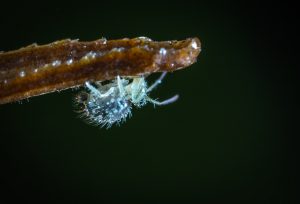Head lice are common among children aged 3-11. These pesky mites are everywhere, and it does not matter the demographic, whether rich or poor. It even infests the cleanest of heads, which they actually prefer! Of course, when your children are around other kids, they are at a higher risk of getting head lice from sharing clothes and other

belongings. It may occur during playtime and other head-to-head contact with other kids at school. Sharing is a huge component of the school experience. While a great lesson, it does help lice transmission. So, it is important to talk to your children to prevent getting head lice altogether.
Tips To Avoid Head Lice
Lice can only live without a host for a day or two. The most common situations that can lead to head lice transfers in school are: sharing combs, brushes, or sleeping in the same bed. Don’t worry, you do not have to shave your head. Here are some tips to abide by:
- Avoid Head-To-Head Contact– Lice do not fly or jump onto you (thank goodness). They spread through head-to-head contact from sharing clothes, playing in the playground, slumber parties, etc. Teach your kids how lice are transferred, and to avoid sharing things with their playmates that have been on their heads.
- Do Not Share Headphones– Headphones can carry lice on them for a short time, so avoid using other’s headphones.
- Do Laundry– Lice die when they are exposed to temperatures higher than 128.3 degrees for more than 5 minutes. If there is an outbreak in your child’s classroom or school, try to wash all of the clothing that they

Kids playing cloesely together is inevitable. This is why it is important to talk to your kids about lice and how to avoid it. have on when they come home right away.
- Hang Up Clothing– Tell your children that they should hang up their jackets on individual hooks in the classroom as opposed to throwing it into a big coat pile.
- Check, Check, Check! Make sure to check your child’s head for lice at least once a week. Lice will generally be on the back of their necks, head, and behind their ears.
- Know The Signs– An itchy scalp is the first sign of head lice. Look for small red bumps on the back of your child’s neck and scalp.
Unfortunately, just because your child has a super clean head or their hair is short or in a ponytail, does not mean lice will not be transferred. The best way to avoid dealing with these mites is prevention. Review all these tips and talk to your kids about what sharing headgear, clothing, and being too close to another kid’s head can lead to. This is especially important if there is a known infestation occurring in the school. If you have kids, you know that it is difficult to eliminate head-to-head contact when they are playing together. So know the signs of lice, and make sure to check, especially if your kid is complaining of itchiness.
